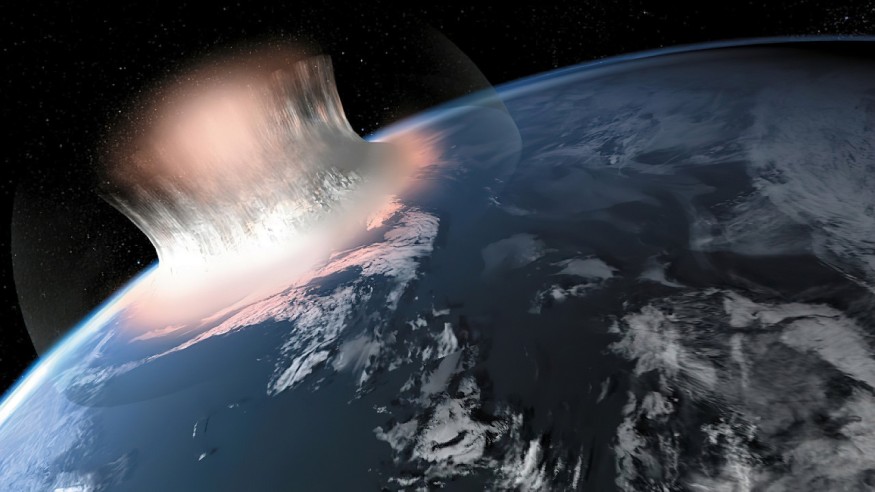Around 66 million years ago, Earth was hit by a miles-wide asteroid that wiped out nearly all the dinosaurs and approximately three-quarters of the plant and animal species on the planet.
According to Phys.org, researchers from the University of Michigan have found evidence that the asteroid impact that created the Chicxulub crater in Mexico's Yucatán Peninsula has triggered mile-high tsunami waves in the Gulf of Mexico, disturbed and eroded sediments in ocean basins halfway across the globe.

Mile-High Tsunami Waves Caused Devastation After the Asteroid Impact
The team reviewed the geological record at more than 100 sites worldwide and found evidence to support their predictions. Their study, "The Chicxulub Impact Produced a Powerful Global Tsunami," published in AGU Advances, focused on the geological record of the marine sediments deposited just before or after the asteroid impact and subsequent mass extinction.
Range said that the distribution of erosion and hiatuses they observed in the upper Cretaceous marine sediments is consistent with their model and gives them confidence in their predictions.
They calculated the initial energy of the impacts as up to 30,000 times larger than the earthquake-tsunami in the Indian Ocean on December 2004, which killed 230,000 people and is one of the largest tsunamis recorded in modern history.
Researchers predicted that the mile-high tsunami waves radiated mainly to the east and northeast of the Atlantic Ocean, the southwestern Central American Seaway, and into the Pacific Ocean, Live Science reported. Water traveled quickly at over 0.4 mph (0.6 kph), a velocity that can erode the fine-grained sediments on the ocean floor.
Moreover, the models suggest that the South Atlantic, the North Pacific, the Indian Ocean, and the modern Mediterranean Sea escaped the tsunami's power because water speeds are less than 0.4 mph.
Affected areas experienced exposed rocky deposits, like the impact on eastern New Zealand's north and south islands, about 7,500 miles (12,00 km) from the impact site. Researchers noted that the models did not assess coastal flooding but revealed the open ocean waves in the Gulf of Mexico would have been 328 feet (100 meters) high as the tsunami approached the coasts of the North Atlantic.
Tsunami Timeline
According to Space.com, researchers used a two-stage strategy to create their models and timeline of when the tsunami formed and hit. The model revealed that the asteroid hit a granite-rich crust covered by thick sediments and shallow water, creating a crater about 60 miles (100 km) wide.
Based on their model, displaced material would have pushed a wall of water nearly 3 miles (5 km) out from the impact site around 2.5 minutes after the strike.
At the 10th minute mark, tsunami waves are nearly a mile tall and have traveled 140 miles (220 km), propagating outward from the impact site and sweeping across the oceans in all directions. After which, the simulation splits into two models that calculate the height of the waves that traveled further outward.
One of the models is currently being used by the NOAA to generate tsunami forecasts. Within an hour of the impact, the tsunami has already spread outside the Gulf of Mexico and into the North Atlantic. At the fourth hour of the event, the waves have already passed through the Central American Seaway.
After 24 hours, the waves have traveled almost the Pacific and Atlantic Oceans and just entered the Indian Ocean. Tsunami waves have almost hit halfway across Earth two days after the impact.
The simulation showed that 24 hours after the Chicxulub impactor had struck Earth, the waves it launched had traveled almost the full extent of the Pacific and Atlantic Oceans and had just entered the Indian Ocean from both sides. The simulation suggests that the waves could have been over 330 feet (100 meters) high when they passed through the Gulf of Mexico, but it was ten times smaller in the North Atlantic and South America.
RELATED ARTICLE: Fragment of Dinosaur-Killing Asteroid And More Found in North Dakota Fossil Site, Will Tell Impact of Chicxulub on Earth, Paleontologist Says
Check out more news and information on Asteroids in Science Times.










